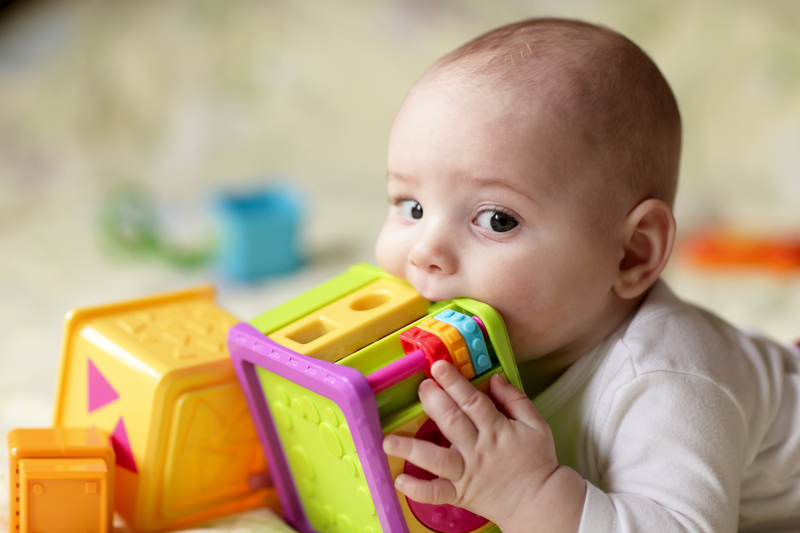Conquer Your Move: Easy End of Tenancy Cleaning Tips for Tenants
Posted on 20/06/2025
Conquer Your Move: Easy End of Tenancy Cleaning Tips for Tenants
Preparing to move out of a rental property can be a whirlwind of tasks, paperwork, and packing. One of the most crucial steps to guarantee the smooth return of your deposit and maintain a positive relationship with your landlord is conducting a thorough end of tenancy clean. If you're feeling overwhelmed, don't worry! Our comprehensive end of tenancy cleaning tips for tenants are designed to help you conquer your move with ease, ensuring you leave your rented home sparkling and stress-free.
Why End of Tenancy Cleaning Is So Important
Before tackling the cleaning process, it's essential to understand why end of tenancy cleaning is necessary. Landlords or letting agents almost always require tenants to leave the property in an immaculate condition, ready for new occupants. A diligent end of tenancy cleaning can help you:
- Secure the full return of your deposit
- Maintain a positive renter reputation for future references
- Avoid disputes and potential cleaning charges
- Leave the property hygienically clean for the next tenants
Many rental agreements have stringent clauses about cleaning, backed by photographic check-in/out inventories. As such, tenants are advised to perform a deep clean, not just a surface tidy, ensuring all areas meet professional standards.

Planning Your End of Tenancy Cleaning: The Smart Approach
1. Review Your Tenancy Agreement
The first step toward a successful end of tenancy clean is to carefully read your tenancy agreement. Most contracts specify the expected level of cleanliness and may highlight specific areas--like carpets, windows, or appliances--requiring attention. Some agreements require professional cleaning, particularly for carpets and upholstery, so clarify requirements before getting started.
2. Make a Comprehensive Cleaning Checklist
Organization is everything! Drafting a detailed end of lease cleaning checklist ensures no spots are missed. Your list should include:
- Kitchens (appliances, cupboards, sinks)
- Bathrooms (toilets, showers, mirrors)
- Living rooms and bedrooms (floors, furniture, walls)
- Windows and doors
- Outdoor areas (balconies, patios, gardens)
Tick off items as you clean each zone for a sense of achievement and to track your progress.
Room-by-Room End of Tenancy Cleaning Tips
To streamline your move, focus on each section of the home separately. Below, you'll find actionable advice and pro tips for every room.
Kitchen: The Heart of Hygiene
- Appliances: Defrost and clean the refrigerator and freezer at least 24 hours before moving. Remove all food debris, trays, and shelves. Scrub the interior and exterior of microwaves, ovens, and dishwashers. Pay special attention to cooker hoods and filters--grease build-up is a common inspection point.
- Sink & Taps: Remove limescale, sanitize, and buff taps to a shine. Clear any food particles from plugholes and drains.
- Worktops & Cupboards: Empty all cabinets and wipe inside and out. Remove stains, crumbs, and dust from countertops. Remember cupboard tops, which often collect thick layers of dust.
- Floors & Walls: Sweep, mop, and degrease wherever food splatters may have landed. For tiled areas, don't forget the grout.
Bathroom: Sparkle and Shine
- Toilets: Use disinfectant to deep clean inside, outside, and around the base. Remove any limescale or water marks from the bowl and seat.
- Showers & Baths: Scrub tiles, glass screens, and grout to eliminate soap scum and mildew. Descale showerheads if necessary.
- Sinks & Taps: Repeat the limescale-removal process here, ensuring everything is gleaming. Wipe down mirrors for a streak-free finish.
- Floor & Walls: Mop tiles and wipe down all surfaces, including radiators and towel rails.
Living Areas and Bedrooms: Restore Comfort
- Carpets & Floors: Vacuum all carpeted spaces meticulously. For stains, use suitable carpet shampoo or spot remover. Consider professional cleaning if specified in your contract. Hard floors should be swept and mopped.
- Walls: Gently wipe dirty areas, removing marks, cobwebs, and dust. Avoid damaging the paintwork. Tackle scuffs with a magic eraser or mild soapy solution.
- Furniture & Fixtures: Dust and polish all surfaces, including skirting boards, curtain rods, switch plates, and light fixtures. Remember to clean inside drawers and wardrobes.
- Windows: Wash the interior and, if accessible, exterior glass panes. Clean sills and frames--grime here is often overlooked!
Entrances, Hallways, and Utility Spaces
- Doors & Handles: Sanitize handles, wipe both sides of doors, and dust the tops.
- Staircases: Vacuum runners, sweep, and mop stairs and landings. Pay attention to edges and corners.
- Laundry & Storage Areas: Clean washers, dryers, utility sinks, and all storage nooks.
Pro End of Tenancy Cleaning Hacks
Want to accelerate your move-out clean while ensuring top results? Try these expert cleaning shortcuts:
- Baking soda and vinegar act as natural deodorizers and stain removers.
- Lemon juice eliminates limescale and freshens sinks and appliances.
- Microfiber cloths attract more dust and bacteria than regular rags, making cleaning more efficient.
- Magic erasers are fantastic for tackling wall scuffs and door marks without damaging paint.
- Use an old toothbrush to get into tight corners, grout, and tap bases.
_Tip: Leave windows open for ventilation, helping dry cleaned areas faster and eliminate lingering odors._
Checklist: Essential End of Tenancy Cleaning Supplies
Being prepared with the right tools and products is half the battle. Our list of must-have supplies ensures you will be ready:
- Multipurpose cleaners and sprays
- Glass cleaner for windows and mirrors
- Anti-bacterial wipes and disinfectant liquids
- Carpet cleaner/shampoo
- Bristle brushes and old toothbrushes
- Microfiber cloths
- Sponges and scourers
- Dustpan and brush, vacuum, and mop
- Rubber gloves and bin liners
- Baking soda, vinegar, and lemon juice for natural cleaning options
Stressing Less: Should You Clean or Call in the Professionals?
While a meticulous DIY clean is entirely possible, some tenants opt for professional end of tenancy cleaning services--especially if time is tight or the property is large. Here's how to decide:
- DIY Cleaning: Ideal for those on a budget, with time to spare and confidence in their cleaning abilities.
- Professional Cleaning: Recommended if your tenancy agreement specifically requires a professional clean, or if the job scope is too large or specialized (e.g., deep carpet cleaning or oven cleaning).
*Tip: Keep all receipts from professional cleaners, as your landlord may request to see these as proof of service.*
What Landlords and Agents Typically Inspect
Understanding the most commonly checked items during an end of tenancy inspection can help prioritize your efforts and avoid disputes. Focus particularly on:
- Kitchens: Ovens, hobs, sinks, appliances, cupboards
- Bathrooms: Grout, shower screens, toilets, taps
- Floors and Carpets: Vacuumed, stain-free, and in good repair
- Paintwork and Walls: No blue tack marks, stains, or cobwebs
- Windows: Clean, inside and out where possible
- Outdoor Spaces: Lawns mowed, rubbish removed
Common Mistakes to Avoid During Your End of Tenancy Clean
Even diligent tenants can slip up in key areas. To ensure you conquer your move out cleaning effectively, avoid these pitfalls:
- Overlooking hidden areas like behind furniture, under beds, and on top of cupboards.
- Neglecting fixtures and fittings such as curtain rails, skirting boards, and light switches.
- Forgetting garden or outdoor maintenance--tidy up patios, clear bins, and trim hedges.
- Ignoring stains or damage--address marks or notify the landlord, don't just hope they won't notice.
- Not allowing sufficient time--deep cleaning takes longer than you think! Start early to avoid last-minute panic.
Frequently Asked Questions (FAQs) About End of Tenancy Cleaning for Tenants
What happens if I don't clean the property properly?
If the property doesn't pass inspection, your landlord may deduct cleaning costs from your deposit. Sometimes they'll hire professional cleaners and bill you for the service, often with added administrative fees.
Is professional end of tenancy cleaning compulsory?
Read your contract carefully. Some landlords or agents require receipts from professional cleaners. In the absence of this clause, you're free to carry out your own cleaning, so long as it meets a professional standard.
How long does end of tenancy cleaning take?
This depends on the size and condition of the property. Studio flats may take 3-4 hours, while larger homes can take a full day--especially when deep cleaning kitchens and bathrooms.
Can I clean the property after moving my belongings out?
Absolutely! In fact, cleaning is often much easier once the property is empty. You'll be able to reach all hidden corners and do a more thorough job.

Your Move-Out Cleaning Success Story: What to Do on the Day
- Double check your end of tenancy cleaning checklist.
- Walk through the home as if you were the landlord or letting agent, looking for anything you might have missed.
- Take dated photos of each clean room as evidence of your efforts--these can help resolve any deposit disputes.
- If using professional cleaning services, get a signed invoice and keep it safe.
- Hand over all keys, locks, fobs, and instructions for appliances before you leave.
Summary: Make Your End of Tenancy Cleaning Count
End of tenancy cleaning is your key to securing your deposit back and ending your tenancy on good terms. By following a logical plan, using effective cleaning methods, and focusing on commonly checked areas, you can hand back your rental property in immaculate condition. Whether you tackle it yourself or hire the pros, the goal is the same: leave no trace behind, except for a shining home ready for its next chapter.
We hope these easy end of tenancy cleaning tips for tenants help you conquer your move with confidence and peace of mind! Happy moving!





